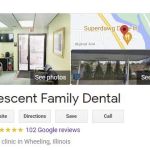Overview of Tooth Enamel Erosion
Tooth enamel erosion occurs when the outer protective layer of your teeth, the enamel, wears thin. This process can have significant implications for the health and appearance of your teeth. It's not something to be taken lightly as it can lead to various complications if left untreated.
Symptoms and Complications of Tooth Enamel Erosion
Symptoms of tooth enamel erosion can vary from person to person. Early signs might include teeth sensitivity, tooth discoloration, chipped teeth, and pitting on the tooth surfaces. As the erosion progresses, you may experience more severe pain. Complications can include yellow or stained teeth, tooth decay, rough or jagged edges, broken or cracked teeth.
Causes of Tooth Enamel Erosion
There are numerous factors that can cause tooth enamel erosion. Consuming sugary, starchy, or acidic foods and beverages is a common culprit. Brushing too hard, especially at the gum line, can also contribute to the problem. Teeth grinding or bruxism, GERD (chronic acid reflux), dry mouth, long-term use of certain medications like antihistamines, genetic disorders like enamel hypoplasia, and bulimia nervosa are all potential risk factors.
Diagnosis and Tests for Tooth Enamel Erosion
A dentist can diagnose tooth enamel erosion during a routine dental examination. They will look for signs of wear and tear, texture changes, pitting, and may take dental X-rays to assess the extent of the damage.
Management and Treatment of Tooth Enamel Erosion
The treatment for enamel erosion depends on its severity. For early-stage erosion, topical fluoride is often used. In more advanced cases, dental bonding, veneers, or dental crowns may be recommended.
Prevention of Tooth Enamel Erosion
Prevention is key. To prevent enamel erosion, it's important to use fluoride toothpaste, brush your teeth at least twice a day, floss once a day, limit your intake of sugary and acidic foods and beverages, rinse your mouth with water after snacks and meals, wait at least 30 minutes to brush after eating, avoid eating close to bedtime, reduce alcohol intake, chew sugar-free gum after meals, and see your dentist regularly for checkups and cleanings.
Outlook and Prognosis of Tooth Enamel Erosion
If left untreated, tooth enamel erosion can have serious consequences such as hypersensitivity to heat, cold, and sweets, exposed dentin, and eventual tooth loss. However, if treated early, it can be prevented from getting worse.
Living With Tooth Enamel Erosion
You should visit your dentist regularly to maintain optimal oral health. If you notice any signs of tooth enamel erosion, such as teeth sensitivity or visual changes like chips, pitting, or discoloration, it's essential to schedule a dental appointment promptly. Early treatment can prevent the erosion from worsening.
In summary, tooth enamel erosion is a serious dental concern that can be caused by a variety of factors. By being aware of these causes and taking preventive measures, you can significantly reduce the risk of enamel erosion and protect the health and beauty of your teeth. Regular dental visits and good oral hygiene practices are essential for maintaining a healthy smile.






 Associated Dentists4.0 (651 review)
Associated Dentists4.0 (651 review) Galkin Orthodontics4.0 (481 review)
Galkin Orthodontics4.0 (481 review) Community Medical & Dental Center3.0 (37 review)
Community Medical & Dental Center3.0 (37 review) Harbor Point Dental at Pelham Manor4.0 (118 review)
Harbor Point Dental at Pelham Manor4.0 (118 review) Dr. Deeptha Surampudi, Crescent Family Dental0.0 (0 review)
Dr. Deeptha Surampudi, Crescent Family Dental0.0 (0 review) Tropic Dental Care | Cosmetic & Emergency Dentist Riverside4.0 (74 review)
Tropic Dental Care | Cosmetic & Emergency Dentist Riverside4.0 (74 review) The Importance of Oral Health Education During Pregnancy for a Healthy Pregnancy
The Importance of Oral Health Education During Pregnancy for a Healthy Pregnancy Best Tips for Brushing Your Teeth Properly for Healthy Gums: Essential Techniques for Oral Health
Best Tips for Brushing Your Teeth Properly for Healthy Gums: Essential Techniques for Oral Health Why Skipping Dental Checkups Can Lead to Bigger Oral Health Problems
Why Skipping Dental Checkups Can Lead to Bigger Oral Health Problems Advantages of Porcelain Dental Restorations
Advantages of Porcelain Dental Restorations How Can Diabetes Cause Tooth and Gum Problems? Preventing and Managing Oral Health Issues
How Can Diabetes Cause Tooth and Gum Problems? Preventing and Managing Oral Health Issues Healthy Habits for Promoting Good Oral Health and Hygiene: Tips for a Healthy Smile
Healthy Habits for Promoting Good Oral Health and Hygiene: Tips for a Healthy Smile